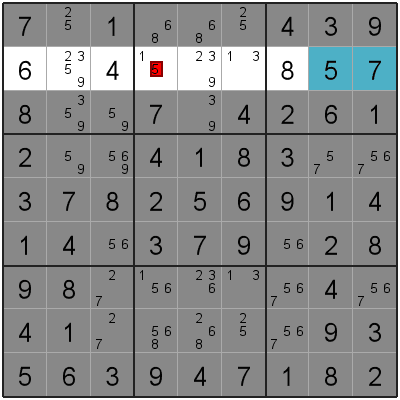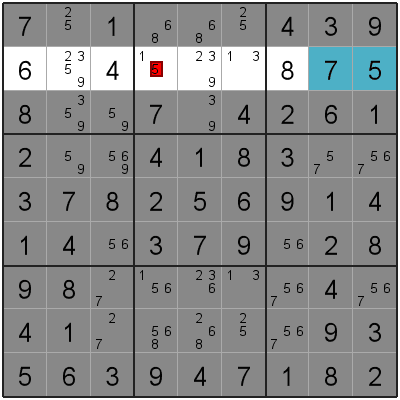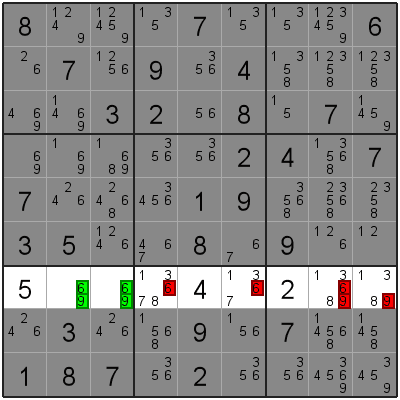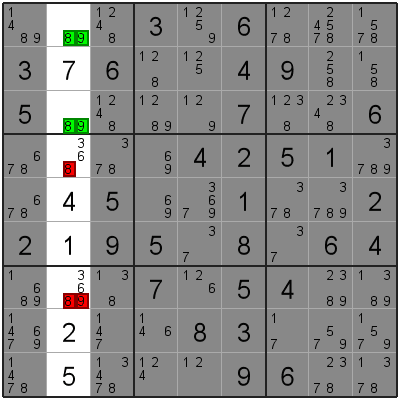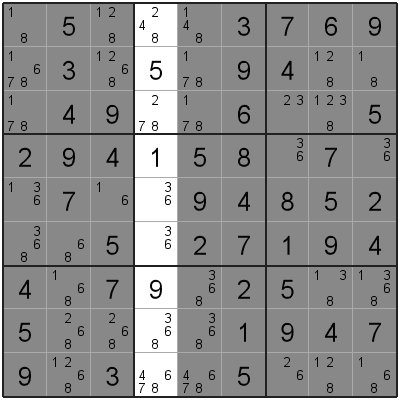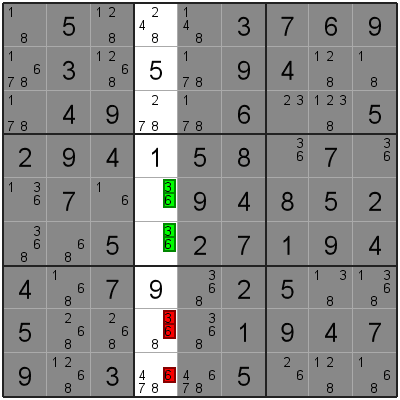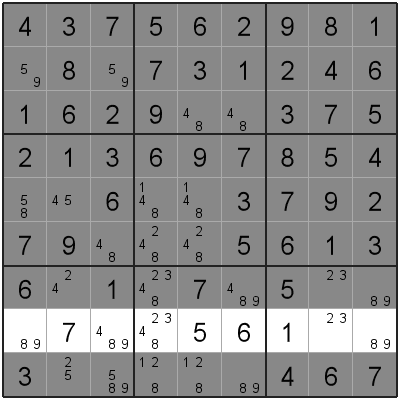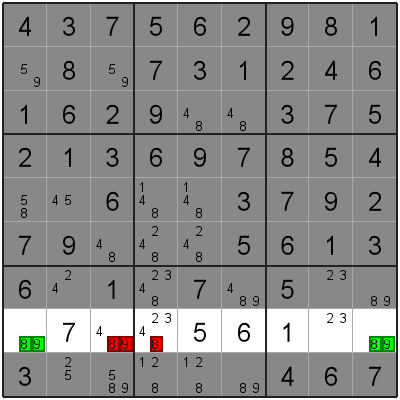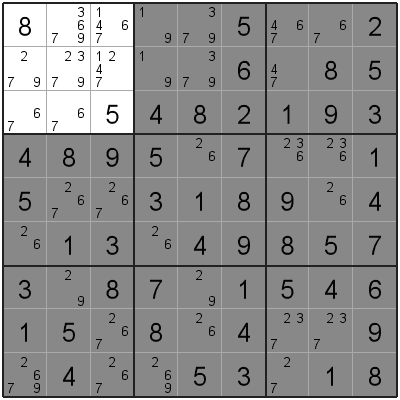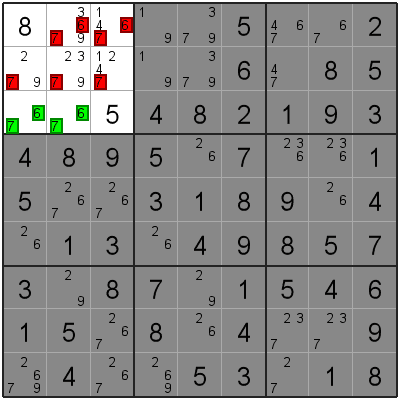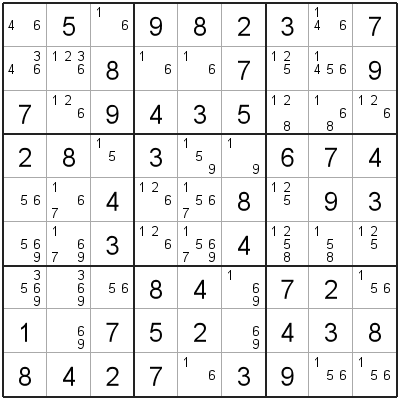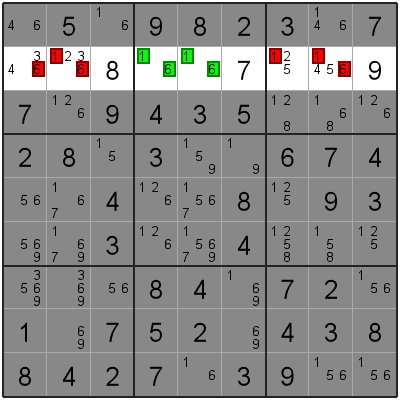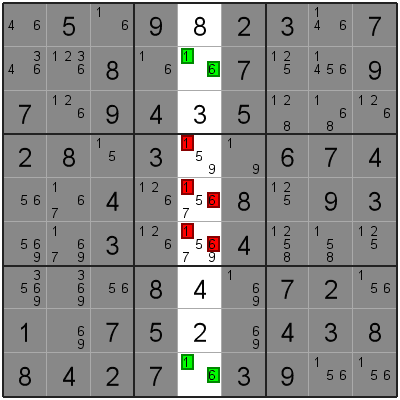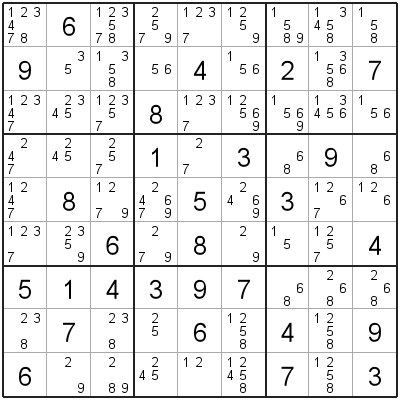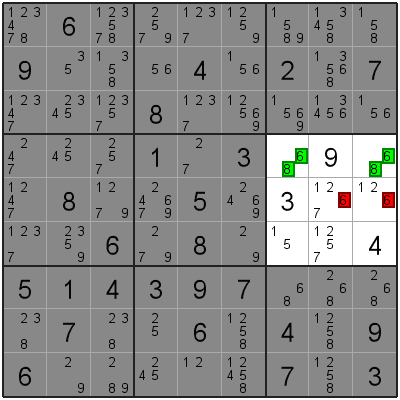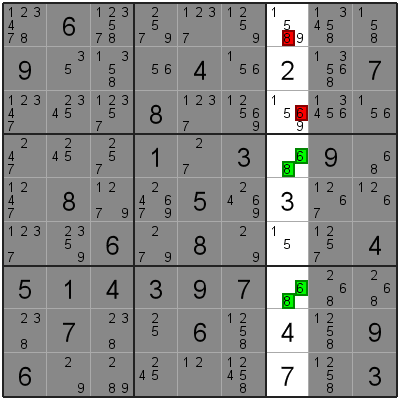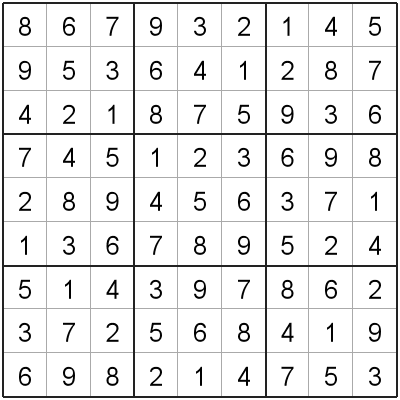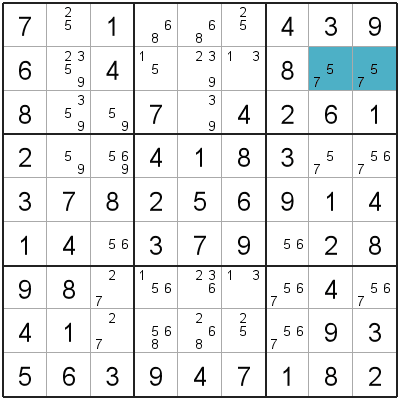
This is a partially-completed Sudoku - we have reached this point just using Single Candidate and Single Position, but we can't go any further with these techniques.
The two highlighted cells contain a 5 and a 7, we don't know yet which way round they will appear, but we do know they will appear in these 2 cells.

It doesn't matter which way round the 5 and 7 appear in the 2 cells, we know that we can't insert a 5 in the highlighted cell.
This means we can remove the 5 as a candidate for this cell, i.e. we can remove the 5 pencil mark.
This only leaves one candidate for this cell, i.e. the value 1. The naked pairs technique has allowed us to move forward on this Sudoku puzzle.

Naked Pairs can also appear in a 3x3 region.
In this example, the 5 and 9 are Naked Pairs within the central 3x3 region. We can remove the 5 from other cells in this region.
(You might also have noticed that these are also Naked Pairs in this column - we can remove the 5 and 9 from the bottom cell in the same column).
Practice puzzles
Here are 10 Sudoku puzzles where you will need to apply the Naked Pairs technique to solve,
- Puzzle
- Puzzle
- Puzzle
- Puzzle
- Puzzle
- Puzzle
- Puzzle
- Puzzle
- Puzzle
- Puzzle


